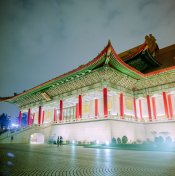CMoore, many blessings upon your head! You have expressed so well what I think and feel in my own heart. KISS. Minimalist photography. Simple is best.
So you are now looking for the simplest way to scan your images.
May I suggest you do as I did in 2009, when I took stock of my archive of film negatives and slides dating back to the early 1960s, and realised I had more than 100,000 images to go through, and sort out the best thereof, and scan them.Nine lifetimes (or livetimes?) of work, but I am only human, not a cat. Ergo, conumdrum.
After much pulling of hair (what little of it remains), gnashing of (mostly ceramic) teeth and a few bottles of good Tasmanian red wines to assist the creative process, I bit the proverbial bullet and invested a reasonable wad of dosh in two scanners which have served me since, and have never ever failed to do what I want them to.
The Plustek 7600i for 35mm negatives and slides. Made in Germany, soultra high quality, and for '35', about as good as it gets. I believe the current model is the 8600 or whatever. Time passes, scanner development marches on. Many are listed on Ebay. Our fellow APUG(sorry-lah, PHOTRIO)ite ozphoto uses an even older 7200i, which given his superlative results is in itself a worthy recommendation for the Plustek.
As the venerable Alan Klein has recommended, the Epson V600 for MF negatives and slides or prints without negatives. More than adequate for my needs (which includes high quality scans for clients)` The Epson software is amazingly good. Vuesan is better, but for what it does, the Epson package is tops. For best results with Epson flatbeds, even with 35, the keywords are test, test, test, and test.
With a little care and attention to the scanning process, Plustek and Epson will produce top quality digital images you can easily downsize for internet posting, and upsize to larger images for printing.
Neither is difficult to work with. Fiddly, yes, at times. There are excellent books available, also online tuition.
Consider the Viewscan software. Others in this thread have recommended this. I am happy to praise it as the best available.
pdeeh, have you checked your scanner settings? You may be scanning at higher levels than you really need. Do a series of tests at different settings, and check the results on magnification. In my experience, the medium range settings are as good as the higher ranges, which just increase your scan times but give you very little in return.








